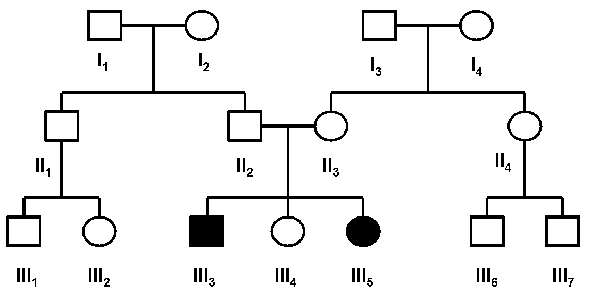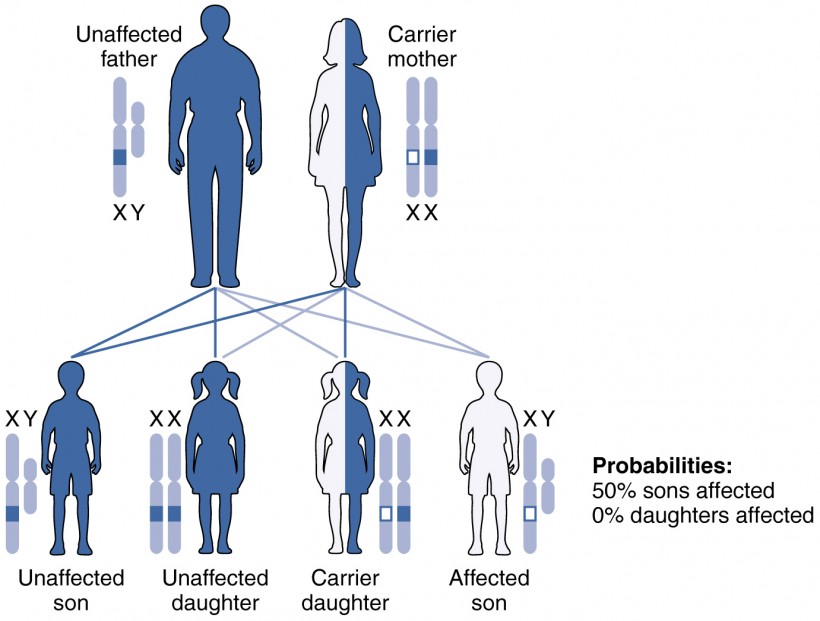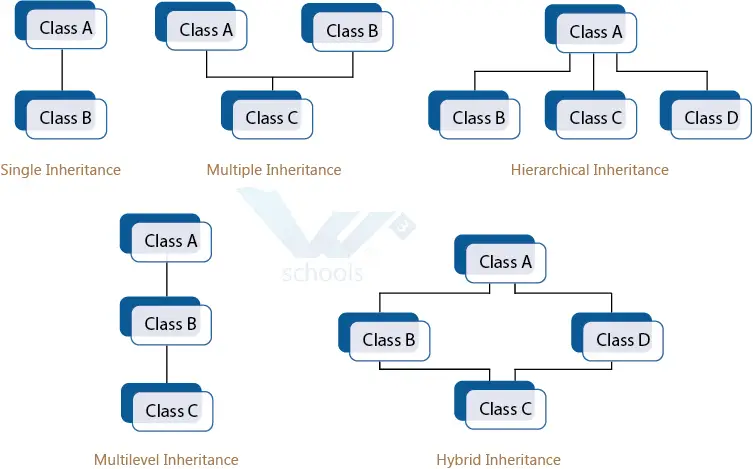


If both parents were carriers of a defective gene associated with a disease or disorder, they would both have the disorder. Of his sons: none will have the disorder sons do not receive an X chromosome from their father.Of his daughters: 100% will have the disorder, since all of his daughters will receive one copy of his single X chromosome.His children will inherit the disorder as follows: When the father alone is the carrier of a defective gene associated with a disease or disorder, he too will have the disorder. Children of either sex have an even chance of receiving either of their mother's two X chromosomes, one of which contains the defective gene in question. Of her daughters and sons: 50% will have the disorder, 50% will be completely unaffected.Her children will inherit the disorder as follows: In X-linked dominant inheritance, when the mother alone is the carrier of a mutated, or defective gene associated with a disease or disorder she herself will have the disorder. This is because males have only one copy of X-chromosome while females have two copies. X-linked dominant disorders tend to affect females more often because thay tend to be developmentally fatal in males. The difference between dominant and recessive inheritance patterns also plays a role in determining the chances of a child inheriting an X-linked disorder from their parentage. This is due to the fact that, typically, females have two copies of the X-chromosome, while males have only one copy. Genetics Īs the X chromosome is one of the sex chromosomes (the other being the Y chromosome), X-linked inheritance is determined by the sex of the parent carrying a specific gene and can often seem complex. Some X-linked dominant conditions are embryonic lethal in males, making them appear to only occur in females. When the son is affected, the mother will always be affected. However, if the mother is also affected then sons will have a chance of being affected, depending on whether a dominant or recessive X chromosome is passed on. All fathers that are affected by an X-linked dominant disorder will have affected daughters but not affected sons. The exact pattern of inheritance varies, depending on whether the father or the mother has the trait of interest.

X-linked dominant traits do not necessarily affect males more than females (unlike X-linked recessive traits). In this case, someone who expresses an X-linked dominant allele will exhibit the disorder and be considered affected. In medicine, X-linked dominant inheritance indicates that a gene responsible for a genetic disorder is located on the X chromosome, and only one copy of the allele is sufficient to cause the disorder when inherited from a parent who has the disorder. As an inheritance pattern, it is less common than the X-linked recessive type. X-linked dominant inheritance, sometimes referred to as X-linked dominance, is a mode of genetic inheritance by which a dominant gene is carried on the X chromosome.


 0 kommentar(er)
0 kommentar(er)
